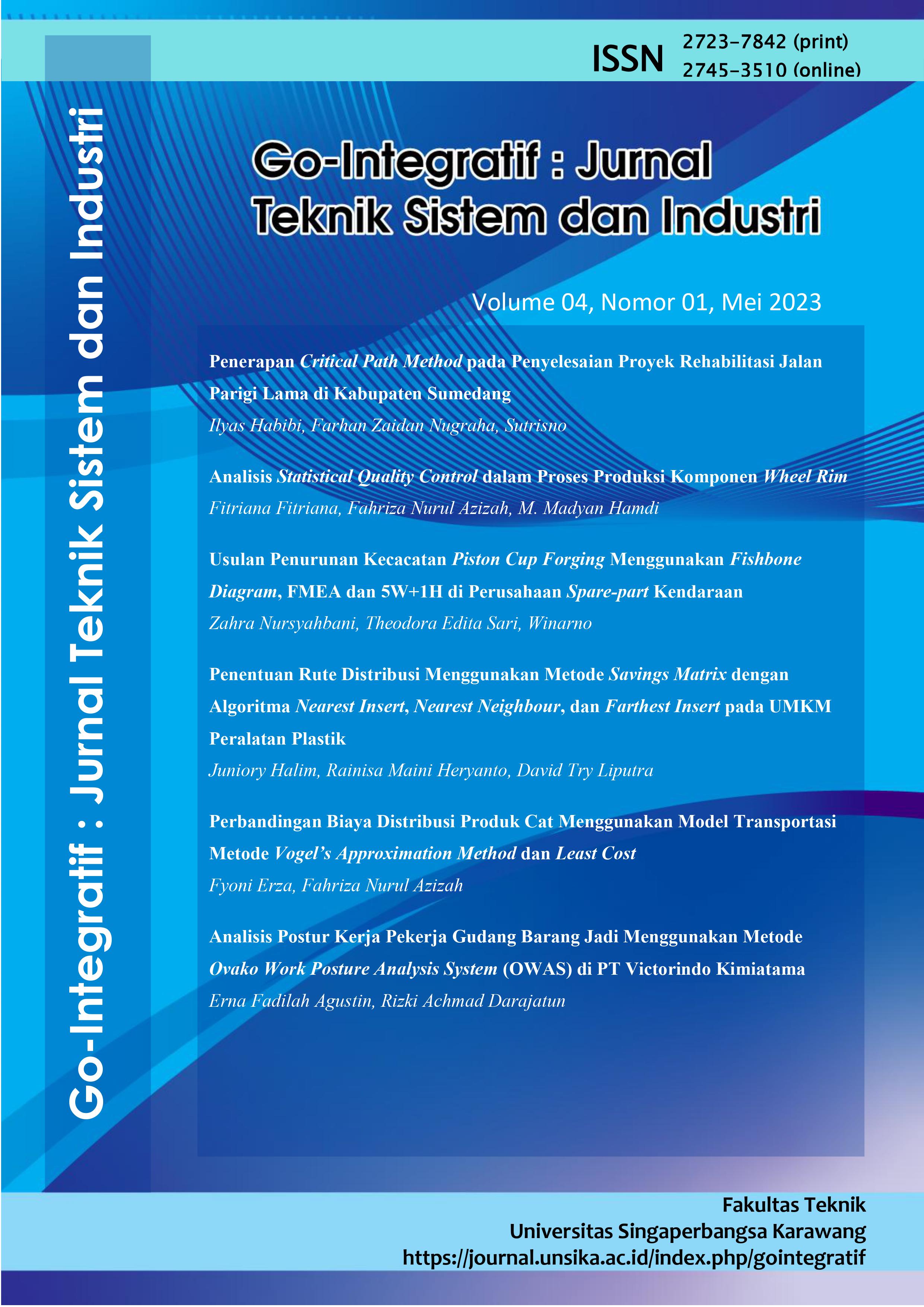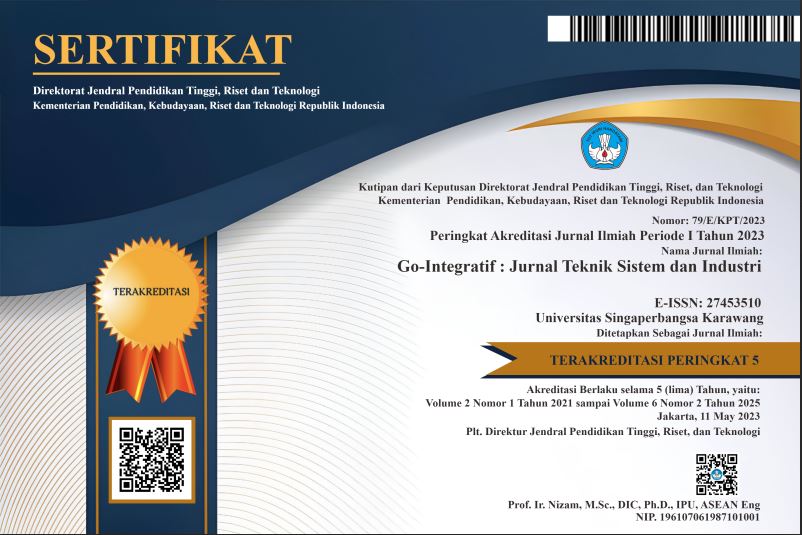Indonesia Indonesia
DOI:
https://doi.org/10.35261/gijtsi.v4i01.8778Abstract
PT XYZ is a company engaged in the automotive component industry for Wheel Rims or rims for two-wheeled and four-wheeled vehicles for the domestic and export OEM markets. The Wheel Rim which was produced by PT XYZ in one month found 255 units of defective products. The types of damage are broken, slips, markings, and inappropriate sizes. So research is needed with a focus on quality control of the products produced. This study uses the Statistical Quality Control (SQC) method to analyze the level of wheel rim product defects and the factors that cause product damage so that the company can find solutions to overcome the damage that occurs and improve the quality of the products produced. The categories of defects with the highest number were broken defects (52%), followed by inappropriate sizes (31%), no markings (6%), inverted marks (5%), pinched (4%), and slips (2%). The results of the study show that the focus of the problem for the company is the number of broken defective products and inappropriate product sizes. The human factor is the main factor affecting the number of defective products, where the lack of accuracy and haste makes the production process not go well.
Downloads
References
R. Ratnadi dan E. Suprianto, “Pengendalian Kualitas Produksi Menggunakan Alat Bantu Statistik (Seven Tools) dalam Upaya Menekan Tingkat Kerusakan Produk,” INDEPT (Jurnal Ind. Elektro dan Penerbangan), vol. 6, no. 2, pp. 10–18, 2020.
F. Tjiptono dan A. Diana, Total Quality Management. Yogyakarta: Penerbit Andi, 2001.
N. Nasution, Dasar-dasar Manajemen Produksi. Yogyakarta: BPFE Yogyakarta, 2015.
I. G. E. Dharsika, I. N. Budiartha, dan I. W. Yansen, “Analisis Kualitas Manajer Proyek Terhadap Pelaksanaan Proyek Kontruksi (Studi Kasus: di Denpasar dan Bandung),” J. Spektran, vol. 5, no. 1, pp. 11–18, 2017.
A. Puspasari, D. Mustomi, dan E. Anggraeni, “Proses Pengendalian Kualitas Produk Reject dalam Kualitas Kontrol pada PT. Yasufuku Indonesia Bekasi,” Widya Cipta, vol. 3, no. 1, pp. 71–78, 2019.
A. Nurdinia, S. Salmia, dan K. Kiswandono, “Pengendalian Kualitas Kerajinan Kayu dengan Statistical Quality Control (SQC) pada UD. Dua Putra-Putri,” J. Valtech (Jurnal Mhs. Tek. Ind., vol. 4, no. 1, pp. 7–12, 2021.
M. W. Wardhana, S. Sulastri, dan E. A. Kurniawan, “Analisis Peta Kendali Variabel pada Pengolahan Produk Minyak Sawit dengan Pendekatan Statistical Quality Control (SQC),” J. Rekayasa, Teknol. dan Sains, vol. 2, no. 1, pp. 27–34, 2018.
W. F. Insani dan F. N. Azizah, “Analisis Pengendalian Kualitas Produk Degan SK 150 Ml dengan Metode Statistical Quality Control (SQC) di PT Prima Kemasindo,” STRING (Satuan Tulisan Ris. dan Inov. Teknol., vol. 6, no. 3, pp. 217–226, 2022.
I. Khomah dan E. S. Rahayu, “Aplikasi Peta Kendali p Sebagai Pengendalian Kualitas Karet di PTPN IX Batujamus/Kerjoarum,” Agrar. J. Agribus. Rural Dev. Res., vol. 1, no. 1, pp. 12–24, 2015.
F. Mahira dan H. H. Hidayat, “Implementasi SQC (Statistical Quality Control) dalam Proses Pascapanen Tebu di PG. Madukismo,” STRING (Satuan Tulisan Ris. dan Inov. Teknol., vol. 7, no. 1, pp. 33–40, 2022.
R. Tri Basuki dan U. Amrina, “Pengendalian Kualitas Labelling pada Botol Oli Menggunakan Metode DMAIC di PT. Bumimulia Indah Lestari,” Go-Integratif J. Tek. Sist. dan Ind., vol. 3, no. 02, pp. 87–97, Nov. 2022, doi: 10.35261/gijtsi.v3i02.6942.
Downloads
Published
How to Cite
Issue
Section
License
Copyright (c) 2023 Fitriana, Fahriza, Dean

This work is licensed under a Creative Commons Attribution-NonCommercial-ShareAlike 4.0 International License.







